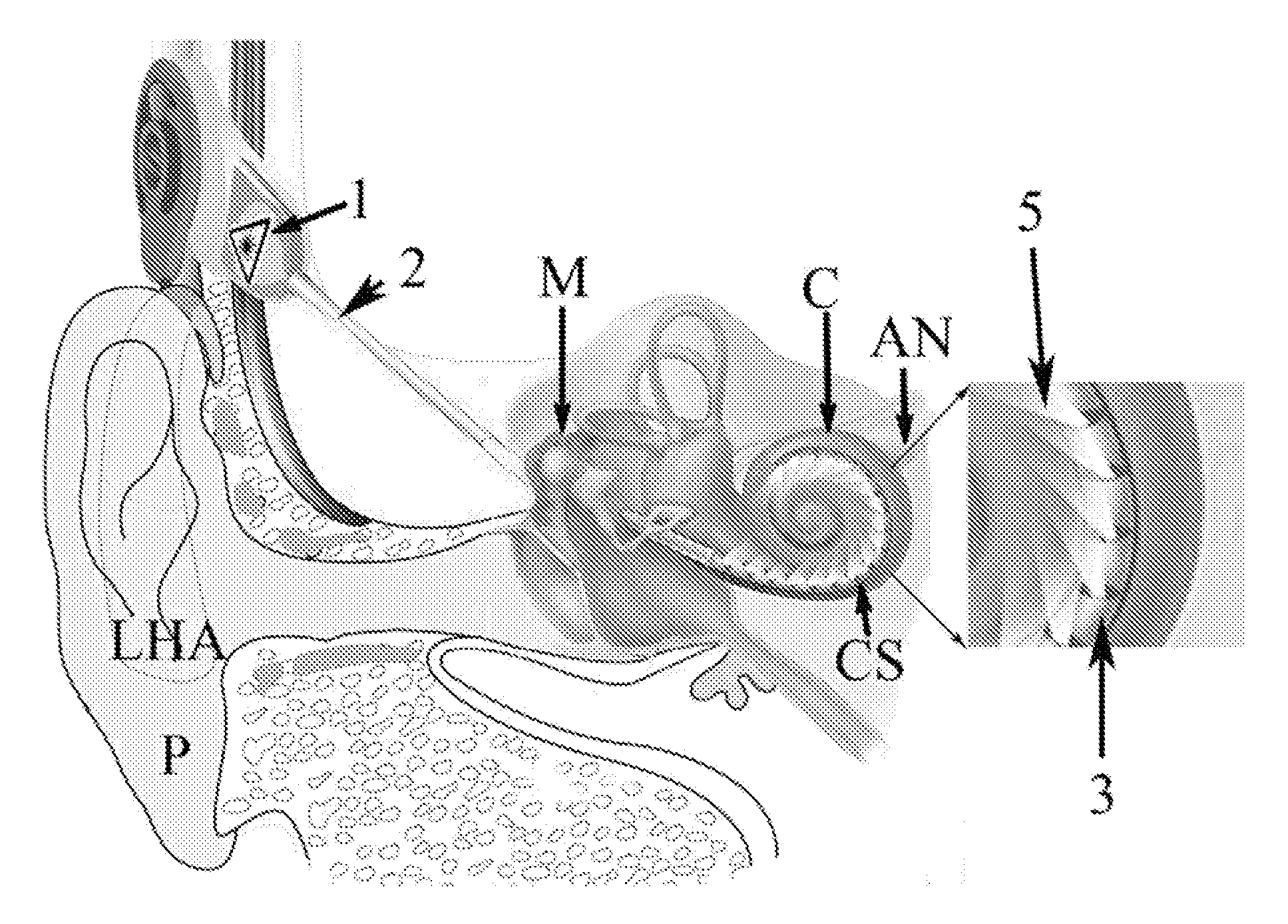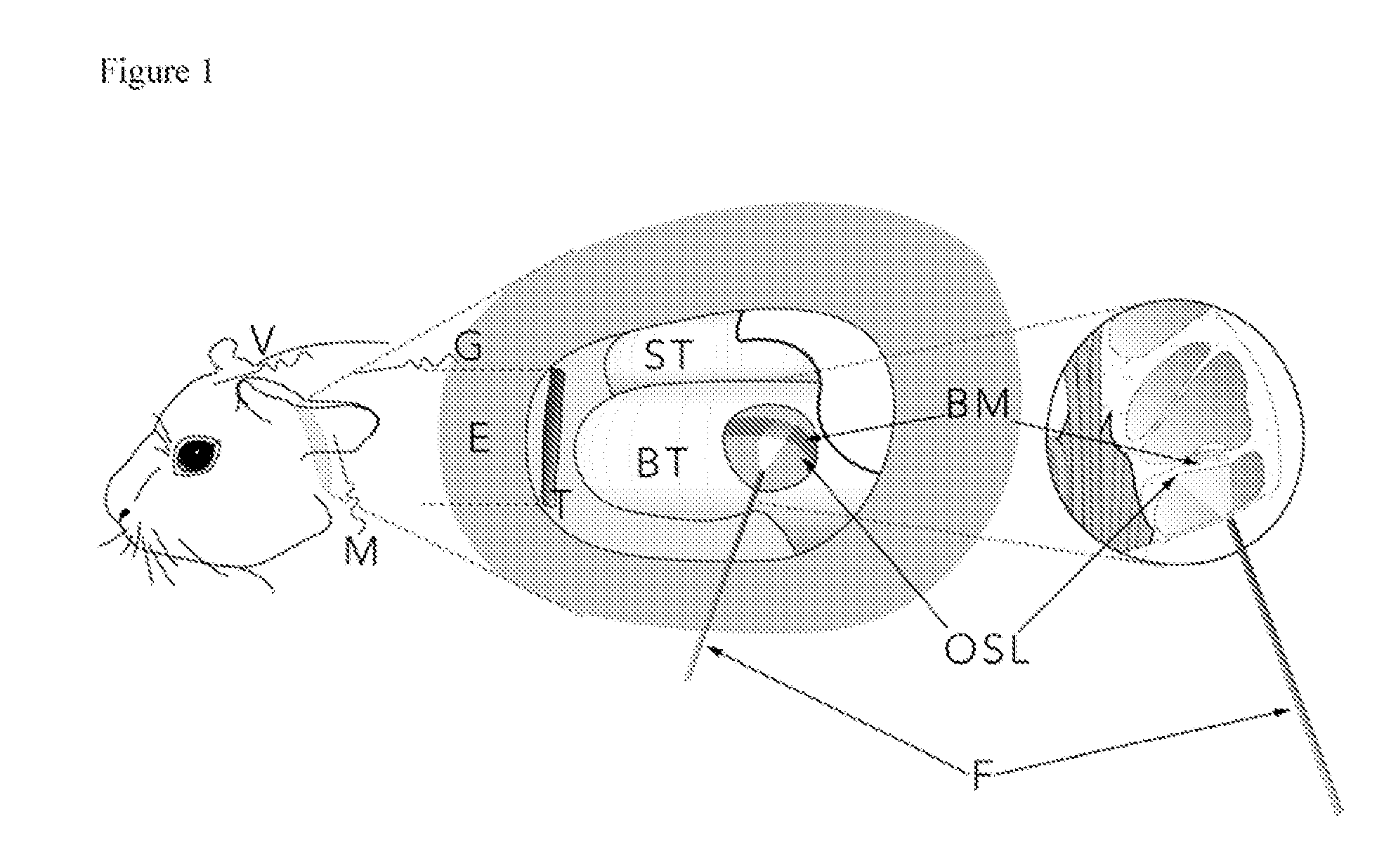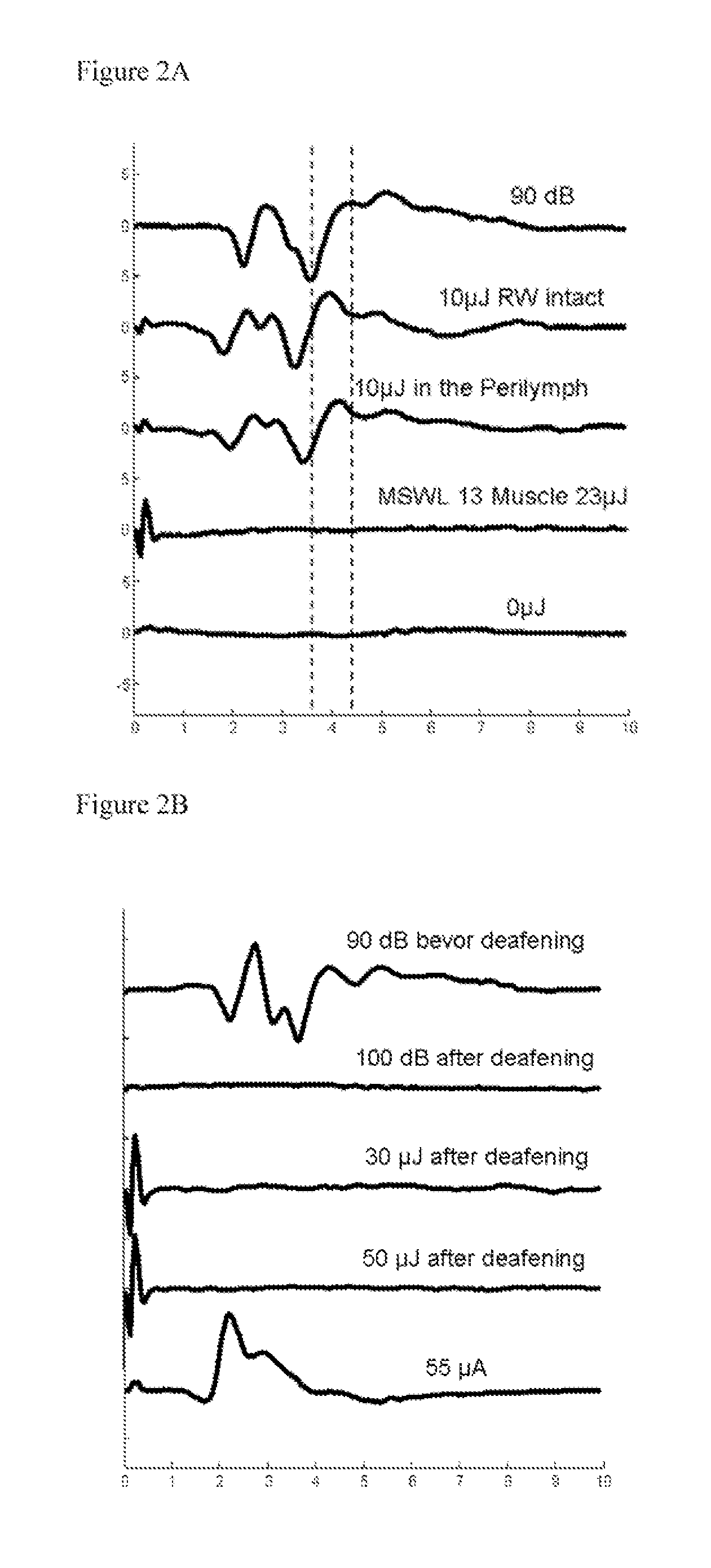Cochlea stimulator
- Summary
- Abstract
- Description
- Claims
- Application Information
AI Technical Summary
Benefits of technology
Problems solved by technology
Method used
Image
Examples
example 1
Generation of Sound Perception by Pulsed Laser Irradiation of Organ of Corti Cells in an Animal Model
[0053]8 pigmented guinea pigs (Charles River Laboratories, Solingen, Germany) of either sex (300 to 600 g) were used according to the guidelines of the Animal Care and Use Committee of the Medical University of Hannover and Lower Saxony. Animals were initially anesthetized with 40 mg / kg of ketamine (Ketanest, Albrecht, Aulendorf / Württemberg, Germany) and 10 mg / kg xylazine (Rompun, Bayer Health Care. Leverkusen, Germany), and maintained with ¼-½ of the initial dosage every 30-60 minutes to maintain an areflexive state. Further administered were 0.05 mg / kg of the anticholinergic agent Robinul (Riemser Arzneimittel, Greifswald-Insel Riems, Germany) intramuscularly, 5 mg / kg of the analgesic Rimadyl (Pfizer, Karlsruhe, Germany) and 13 ml / kg Ringer solution subcutaneously. Throughout the experiment the body temperature was maintained at 38° C. using a water heating pad.
[0054]For placing th...
example 2
Activation of Different Organ of Corti Sections by 532 nm Laser Pulses Causes Frequency Specific Auditory Signals in the Inferior Colliculus
[0064]Using the general experimental set up as described in Example 1, the frequency specific activity in the inferior colliculus was measured. The multi channel electrode inserted into the inferior colliculus having its contacts along its length, allows for the frequency specific recording of auditory signals in the inferior colliculus, as activity in different regions of the inferior colliculus in response to acoustic signals received by the cochlea. The electrode had 16 segments for measurement and was coupled to a recorder receiving the signals from each of the 16 segments in one of 16 channels. In this example, the optical fibre was coupled to the laser which generated irradiation of 13 μJ / pulse in 10 ns pulses with a repetition rate of 10 Hz at a wavelength of 532 nm.
[0065]Herein, the optical fibre was inserted into the cochlea at the rou...
embodiment
Preferred Embodiment
[0067]A preferred embodiment of the device is shown schematically in FIG. 4. The device contains a laser 1 and one or more optical fibres 2 optically coupled to the output section of the laser for receiving laser irradiation. As an example for a device containing more than one optical fibres, a bundle CS of optical fibres is shown, each of which is optically coupled to a laser 1. Preferably, in embodiments containing several optical fibres CS, an optical switch is arranged between the laser and the optical fibres for controlling the laser irradiation transmitted to each fibre. Each of the optical fibres 2 terminates in an end section 3, each of which is positioned in a spacing adjacent an organ of Corti section because each optical fibre 2 is dimensioned for termination in an end section 3 in a spacing adjacent an organ of Corti section. Laser irradiation emitted from the laser 1 is conducted along the optical fibres 2 to their end sections 3. At end sections 3, ...
PUM
 Login to View More
Login to View More Abstract
Description
Claims
Application Information
 Login to View More
Login to View More - R&D
- Intellectual Property
- Life Sciences
- Materials
- Tech Scout
- Unparalleled Data Quality
- Higher Quality Content
- 60% Fewer Hallucinations
Browse by: Latest US Patents, China's latest patents, Technical Efficacy Thesaurus, Application Domain, Technology Topic, Popular Technical Reports.
© 2025 PatSnap. All rights reserved.Legal|Privacy policy|Modern Slavery Act Transparency Statement|Sitemap|About US| Contact US: help@patsnap.com



